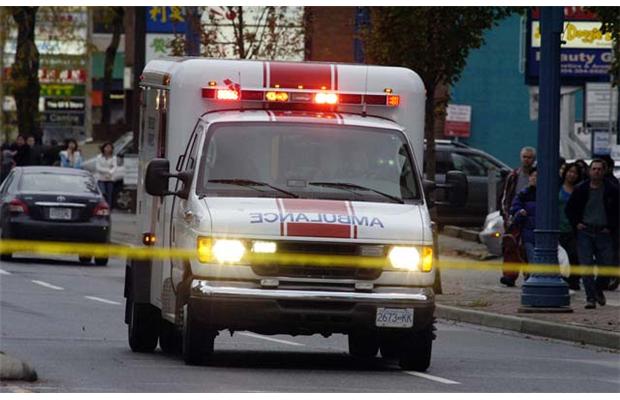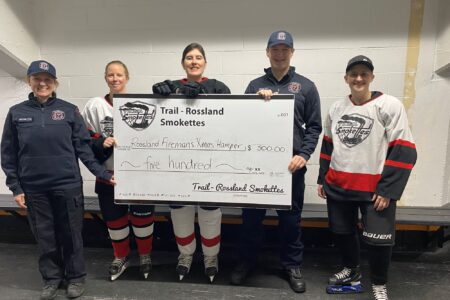Editorial: Pull over for emergency vehicles – it’s the law
First responders have reached out to media outlets to remind everyone that drivers must – by law – pull over and stop when emergency vehicles approach with sirens on and their emergency lights flashing, from either direction. Ambulance drivers, fire trucks, police vehicles – all have recently noticed that some drivers seem unaware that they must pull over when an emergency vehicle approaches with its siren and emergency lights flashing.
First responders recently reported a “close call” involving a school bus which failed to yield to an emergency vehicle.
Speaking of school buses, it is imperative that drivers in both directions of travel stop for any school bus stopped with its red lights flashing. The safety of children is at stake.
On stopping for emergency vehicles, the BC Motor Vehicle Act states:
177 On the immediate approach of an emergency vehicle giving an audible signal by a bell, siren or exhaust whistle, and showing a visible flashing red light, except when otherwise directed by a peace officer, a driver must yield the right of way, and immediately drive to a position parallel to and as close as possible to the nearest edge or curb of the roadway, clear of an intersection, and stop and remain in that position until the emergency vehicle has passed.
It doesn’t matter which direction the emergency vehicle is coming from; drivers must pull over and stop whether it’s approaching in the oncoming traffic lane(s) or coming up from the rear.
Any wise driver won’t assume that the road is clear once one emergency vehicle has passed – emergency vehicles often “travel in packs” so if you see a fire truck or an ambulance, chances are that a police or other emergency vehicle will soon follow – so please look before pulling out again.
Emergency vehicles are often hurrying to help someone who needs help as quickly as possible – whether to put out a house fire, or to keep a person from dying of a heart attack, or bleeding to death from an injury – and drivers who fail to pull over can add crucial minutes to the time it takes for an emergency vehicle to help someone.
When there are vehicles stopped along the road that have flashing red, blue or yellow lights, drivers must slow down and pull over to pass slowly and well clear of the stopped vehicles and any personnel. The vehicles may be tow trucks, fire rescue vehicles, ambulance, police, land surveyors, utility workers, animal control workers, garbage collectors, maintenance workers, commercial vehicle safety enforcement, and others.
When approaching vehicles with flashing lights stopped on the roadside, motorists must slow their speed to:
∙ 70km/h when in an 80km/h or over zone
∙ 40km/h when in an under 80km/h zone.
As Deputy Fire Chief Glen Gallamore of the Kootenay Boundary Regional Fire Rescue service points out,
“We all need to do our part when it comes to safety. Watch for emergency vehicles, yield the right of way and slow down when passing personnel on the highway. It is that simple, and it can mean the difference between helping in one emergency and causing another.
“And yes, IT’S THE LAW.
“Drivers failing to adjust their speed or failing to move over may receive a $173 traffic violation ticket that also carries three penalty points. Offences and infractions that include penalty points can lead to a driving prohibition.”
Brittanie Irwin of BC Emergency Health Services also pointed out that with winter road conditions setting in, “it is more dangerous for everyone.”
Of course, speeding alone makes life more dangerous for everyone, from the speeder to other drivers to pedestrians and cyclists.
Besides being diligent and watchful and pulling over and stopping for emergency vehicles, please respect everyone else enough to curb your speeding habit – and be especially careful about it in residential areas and school zones. We have all seen too many people blasting along at 60 km/h or more in 30 km/h zones, and blowing through stop signs. Sometimes that sort of behaviour, or simply failing to pay attention, results in crashes. According to ICBC’s Open Data Source, there were 151 of them in Rossland alone in 2019. Seventeen of those resulted in what ICBC terms “casualty ”—in other words, someone was hurt, perhaps seriously, or killed. All other local communities had crashes, with a hefty percentage of them resulting in casualties too.
Wrecking, or even denting, a vehicle can be expensive. Injuries can cost so much more, especially in terms of life and our ability to enjoy it.
Besides, driving respectfully is kind, and being kind feels good.
























